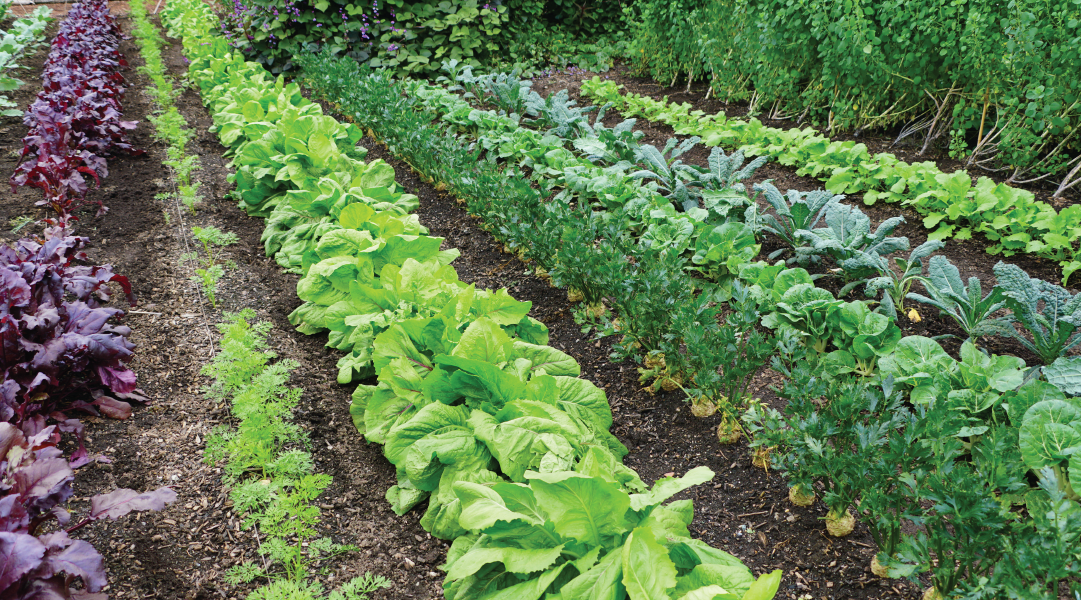Garden Planning Tips
Before you start laying down solid plans for your garden, it is important to “find your why.” Ask yourself why you are gardening this year and what do you hope to get out of it? A successful garden looks different for every single one of us:
- Family bonding
- Fewer trips to the grocery store
- Greater food security/emergency preparedness
- Physical and mental health benefits
- Healthier eating habits
- Trading and/or giving homegrown food to others
- Selling harvests for profit
- Other gardening benefits
Knowing “your why” will help you define what success will look like for you and your garden and guide you through possible setbacks in the future. Now let’s dive into some best practices for planning your garden this year.

Identify Your Growing Zone
Finding your plant hardiness zone will help you know:
- Which plants can be grown outside in your climate
- Which plants should be started inside or moved inside when your growing season ends
- What your growing calendar will look like (when your growing season starts and stops)
It is important to remember that you don’t always have to limit your plant selection based on your growing zone, they will just need some extra modifications (access to adequate light and warmth during the winter). I know a grower who has kept a fruit producing lemon tree going for years in Alberta, Canada!
If keeping track of all of these dates, zone numbers, and temperature ranges feels like a lot, consider downloading a gardening app. Gardening apps can give you advice based on your growing zone, precipitation levels, etc. Some are even connected to weather data and can give you alerts to cover temperature sensitive plants, provide heat stress relief, and protect during extreme weather.
Test and Amend
Even if you garden every year, testing your soil is an important preliminary step. Soil testing will help you avoid costly and frustrating guesswork by guiding you to amendments you actually need. Fortunately testing your soil is easier than ever with Redmond’s Soil Test Kit.
Get the lay of the land
Become familiar with your gardening area by identifying:
- Areas of full sun, partial sun/shade, full shade
- Areas sheltered from or exposed to wind
- Slope and drainage (areas where water is pooling or being lost to runoff)
- Potential locations for pots/containers, supports, raised beds, towers, etc.
- Which plants should be grown next to each other vs. separated (Here is a handy planting guide from the experts at the Farmer’s Almanac).
- Spacing needs (leave room for growth, walking room for garden maintenance and harvesting)
Use your virtual garden planner or sketch out where you would like each crop to go based on the above observations.
Build a Support System

Growing supports (trellises, cages, poles, nets, etc.) are extremely beneficial for many crops:
- Keeps fruits and vegetables off the ground (reduces exposure to rot and pests)
- Prevents you from accidentally stepping on or backing into young plants
- Provides support during high winds and storms
Make sure you have growing supports for all climbing and sprawling plants (peas, beans melons, cucumbers, squash, cane grown berries). Supports should be ready to go in the ground when your plants do. Installing them after your plants are growing increases the chance of damage to roots, stems, and soil structure. Before you go and spend a lot of money at your garden center, take a look at what you already have lying around. There are many household materials that can be repurposed into growing supports. I have used my kids' old crib mattress support frame for my cucumbers now for 4 years and it is still going strong!
Have a garden maintenance plan
Once you get your plants in the ground, come up with a garden maintenance plan which should include:
- Weed prevention: mulch, weed prevention treatments, cover crops, ground cover fabric, etc.
- Pest prevention: talk to local growers about the pests they have experienced, make decisions about organic vs. traditional pest prevention methods and purchase accordingly
- Responsible watering: timers, trickle watering, watering during the coolest time of the day, etc.
- Harvest preparation: know each crop's harvest schedule, make decisions about what you would like to preserve/share/trade/sell, purchase supplies (harvest baskets, jars, lids, dehydrators, etc.)
Since the 1950s, Redmond Minerals has supported healthy growing operations of all sizes and shapes with our unique mineral and volcanic products. Give our experts a call today at  to see how Redmond can help you have a successful growing year!
to see how Redmond can help you have a successful growing year!
© 2024 Redmond Minerals Inc.

